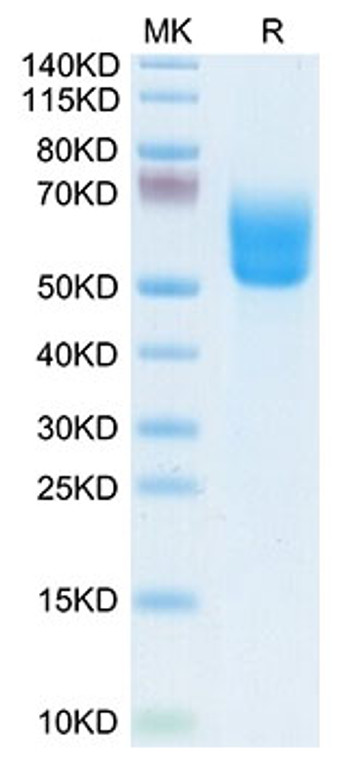| Host: |
HEK293 cells |
| Reactivity: |
Human |
| Note: |
STRICTLY FOR FURTHER SCIENTIFIC RESEARCH USE ONLY (RUO). MUST NOT TO BE USED IN DIAGNOSTIC OR THERAPEUTIC APPLICATIONS. |
| Short Description: |
Recombinant-Human Dkk-3-C-His & Avi protein was developed from hek293 cells and has a target region of C-His & Avi. For use in research applications. |
| Conjugation: |
Biotin |
| Storage Instruction: |
Store at-20°C for up to 1 year from the date of receipt, and avoid repeat freeze-thaw cycles. |
| Endotoxin: |
Less than 1EU per Mu g by the LAL method. |
| Gene Symbol: |
DKK3 |
| Gene ID: |
27122 |
| Uniprot ID: |
DKK3_HUMAN |
| Immunogen Region: |
Pro23-Ile350 |
| Immunogen: |
Recombinant Biotinylated Human DKK3 Protein is expressed from Expi293 with His tag and Avi tag at the C-terminal.;It contains Pro23-Ile350. |
| Post Translational Modifications | N- and O-glycosylated. |
| Function | Antagonizes canonical Wnt signaling by inhibiting LRP5/6 interaction with Wnt and by forming a ternary complex with the transmembrane protein KREMEN that promotes internalization of LRP5/6. DKKs play an important role in vertebrate development, where they locally inhibit Wnt regulated processes such as antero-posterior axial patterning, limb development, somitogenesis and eye formation. In the adult, Dkks are implicated in bone formation and bone disease, cancer and Alzheimer disease. |
| Protein Name | Dickkopf-Related Protein 3Dickkopf-3Dkk-3Hdkk-3 |
| Cellular Localisation | Secreted |
| Alternative Protein Names | Dickkopf-Related Protein 3 proteinDickkopf-3 proteinDkk-3 proteinHdkk-3 proteinDKK3 proteinREIC proteinUNQ258 proteinPRO295 protein |
Information sourced from Uniprot.org
12 months for antibodies. 6 months for ELISA Kits. Please see website T&Cs for further guidance








